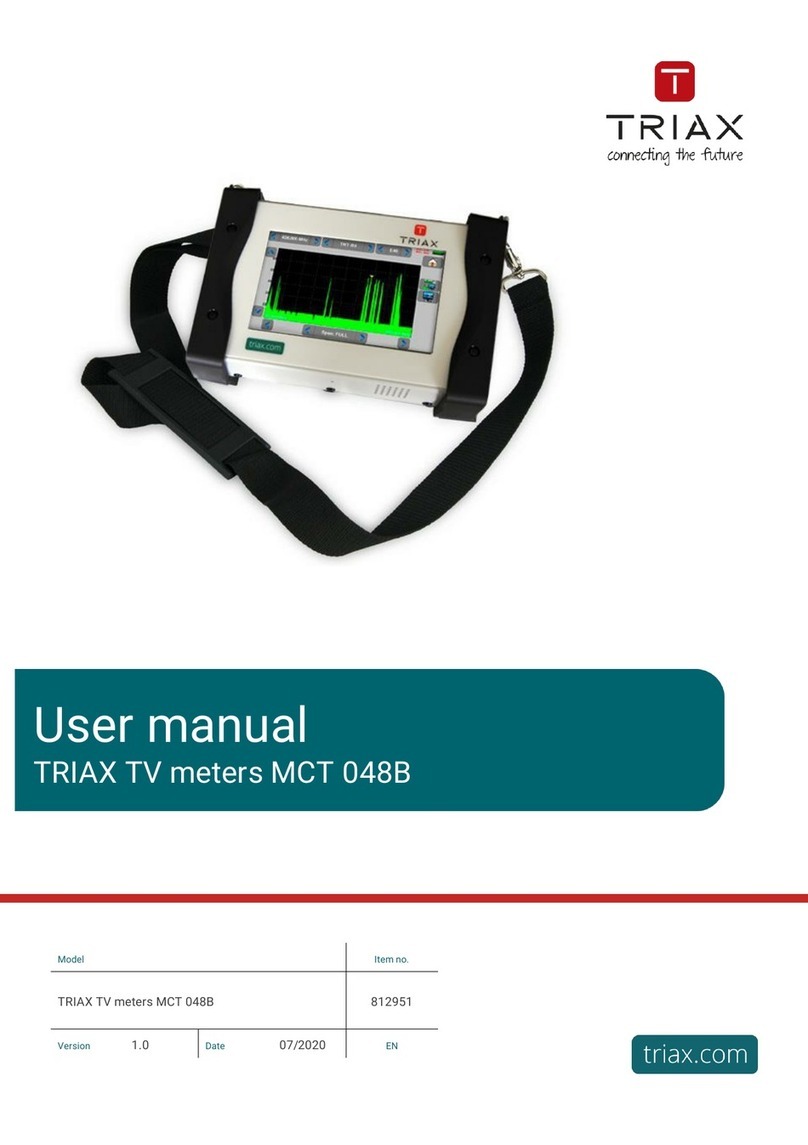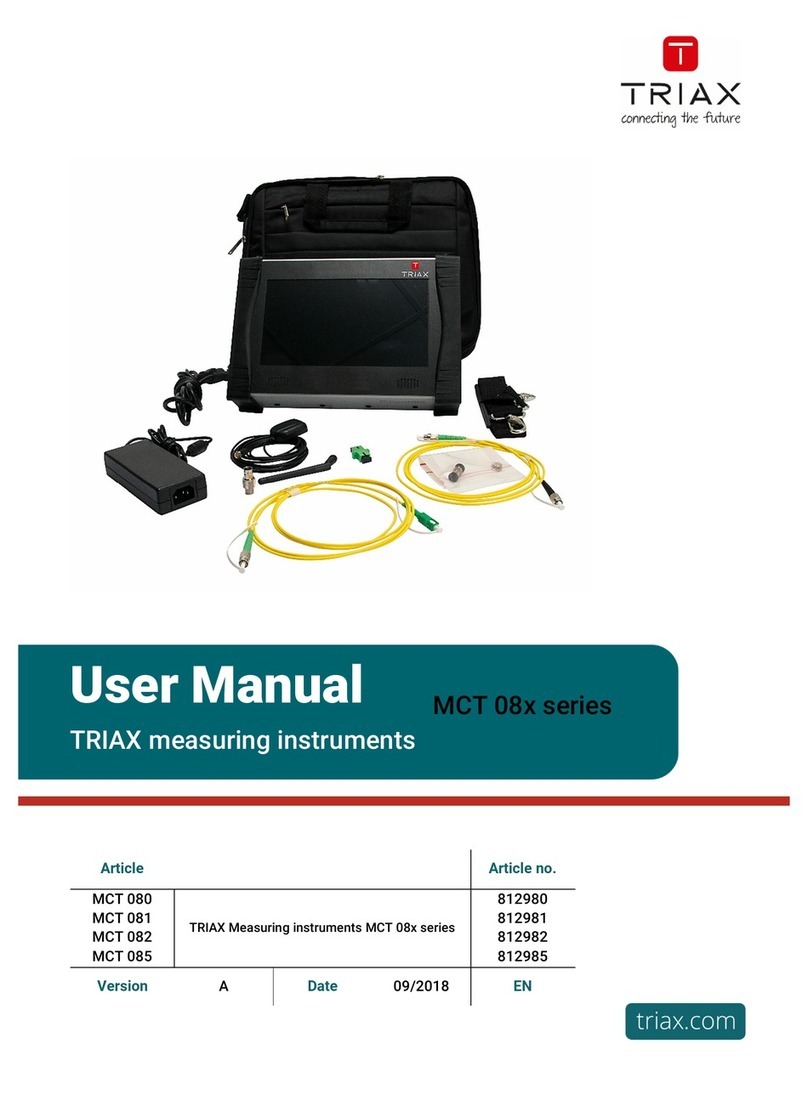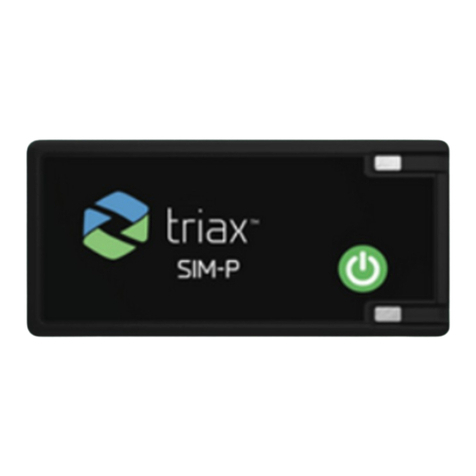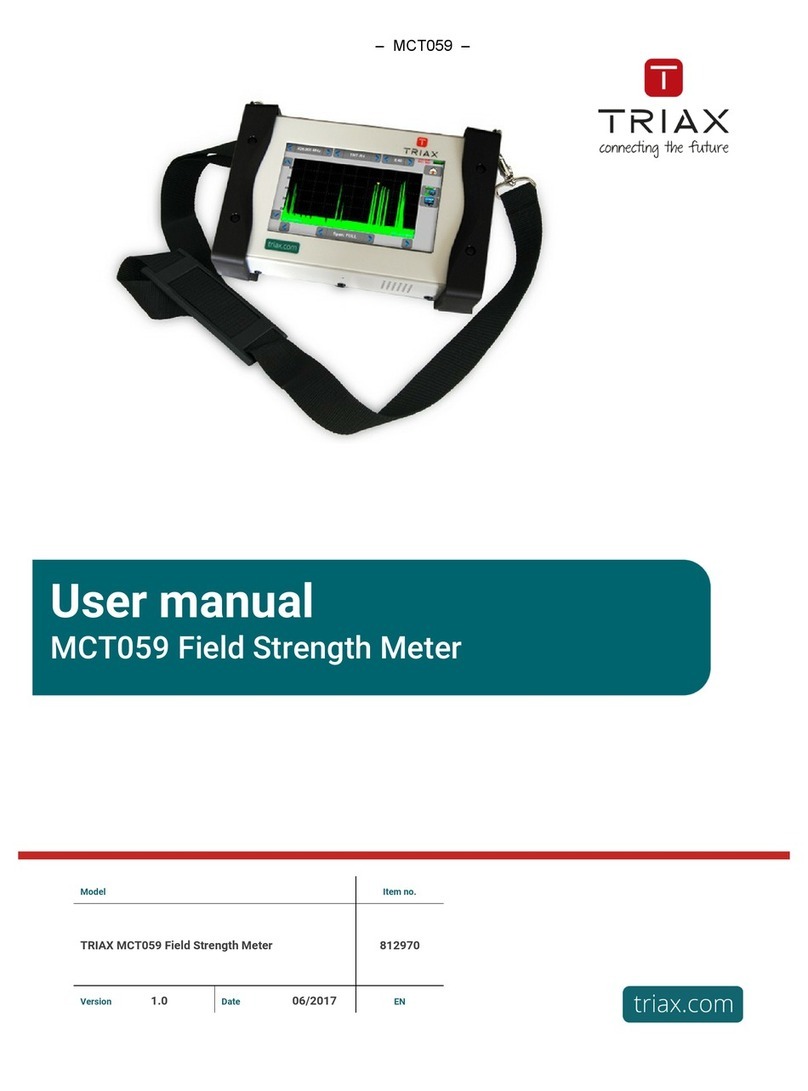Introduction ........................................................................................................................................................................... 6
Description of the UPM 1400 unit .................................................................................................................................................................6
Content of the product package delivered ....................................................................................................................................................6
Main Features ........................................................................................................................................................................ 6
Frontal face ....................................................................................................................................................................................................7
Right side .......................................................................................................................................................................................................7
Left side..........................................................................................................................................................................................................8
Commissioning (put into operation)........................................................................................................................................ 8
Turn on the meter, charge the battery ..........................................................................................................................................................8
Functioning ....................................................................................................................................................................................................8
Main menu............................................................................................................................................................................. 9
Description of the menu items ......................................................................................................................................................................9
Main menu...................................................................................................................................................................................................10
Satellite menu.......................................................................................................................................................................10
Satellite, TP search: satellite list...................................................................................................................................................................10
Satellite, TP search: functions and settings..................................................................................................................................................11
Satellite, TP search: explorer menu .............................................................................................................................................................11
Satellite, TP search: add/edit a transponder................................................................................................................................................12
Satellite, SAT identification ..........................................................................................................................................................................13
Satellite, packet control: satellite list...........................................................................................................................................................14
Satellite, TP control: parameters and functions...........................................................................................................................................14
Satellite, DiSEqC search................................................................................................................................................................................15
Satellite, motor/actuator .............................................................................................................................................................................15
Satellite, spectrum .......................................................................................................................................................................................16
Satellite, spectrum: constellation diagram ..................................................................................................................................................17
Satellite plotting, introduction.....................................................................................................................................................................17
Satellite configuration, alignment settings ..................................................................................................................................................18
Satellite configuration, pointing using the measuring device ......................................................................................................................19
Terrestrial menu ...................................................................................................................................................................19
Terrestrial, TP research ................................................................................................................................................................................19
Terrestrial, constellation diagram................................................................................................................................................................20
Terrestrial, packet control............................................................................................................................................................................21
Terrestrial, spectrum ...................................................................................................................................................................................21
Cable menu (wired network)..................................................................................................................................................22
Cable, TP search...........................................................................................................................................................................................22
Cable, constellation diagram........................................................................................................................................................................23
Cable, packet control ...................................................................................................................................................................................23
Cable, spectrum ...........................................................................................................................................................................................24
TV mode ...............................................................................................................................................................................24
TV mode, introduction.................................................................................................................................................................................24
TV mode, channel lists option......................................................................................................................................................................25
TV mode, advanced options.........................................................................................................................................................................26
TV mode, advanced PVR options .................................................................................................................................................................26
TV mode, signal search and evaluation........................................................................................................................................................27
Parameters and advanced menus of the meter ......................................................................................................................27
Parameters...................................................................................................................................................................................................27
Reset……………………………………………………………………………………………………………………………………………………………………………………………………..28
Advanced .....................................................................................................................................................................................................29
Updating the UPM 1400 software ...............................................................................................................................................................29
Additional information...........................................................................................................................................................30
Image reproduction of an external audio/video signal................................................................................................................................30
Technical datasheet .....................................................................................................................................................................................31



































